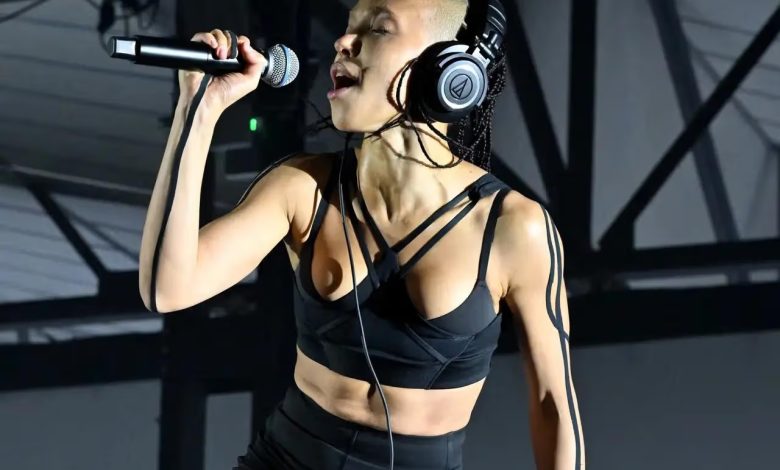How Music Inspires Fashion Trends

Music has always been an integral part of human culture, not just as an art form but as a powerful force that influences many aspects of life, including fashion. From the rock ‘n’ roll revolution of the 1950s to the vibrant streetwear of the 1990s, music has shaped and defined the way people dress. The link between music and fashion is not just a matter of style but a reflection of culture, identity, and rebellion. As musicians express themselves through their sound, they simultaneously influence the visual language of their era, often setting trends that resonate across generations.
The Influence of Iconic Musicians on Fashion
At the core of the relationship between music and fashion is the persona of the artist. Musicians often serve as both trendsetters and symbols of cultural movements, their style choices deeply intertwined with their musical identity. The clothing they wear, the way they present themselves, and the overall aesthetic they project have a profound effect on fashion trends.
For example, in the 1960s, figures like The Beatles and The Rolling Stones helped define the look of the era with their sleek suits, skinny ties, and later, their more casual and bohemian styles. The Beatles, particularly, introduced the mod look, which was characterized by sharp suits, button-down shirts, and carefully styled hair, a look that was emulated by millions around the world. As music evolved throughout the decade, so did the fashion associated with it, moving from the polished looks of pop stars to the grungy, free-spirited style of the hippie movement.
Another significant musician who left an indelible mark on fashion was David Bowie. With his glam rock persona, Bowie was not just a musical pioneer but a fashion icon. His chameleon-like ability to constantly reinvent himself, from the androgynous Ziggy Stardust to the sharp, tailored looks of the Thin White Duke, made him a central figure in the intersection of music and fashion. His bold use of color, gender-fluid styles, and avant-garde aesthetics set the tone for an entire generation and influenced designers and artists long after his time.
Music Genres and Their Fashion Signatures
Different genres of music have long been associated with distinct styles, and the fashion choices of musicians within these genres often reflect the cultural movements they represent. Rock, hip-hop, punk, and electronic music all have unique fashion signatures that continue to influence the way people dress.
Rock and Roll and Rebel Chic
The birth of rock ‘n’ roll in the 1950s brought with it a rebellious, youthful spirit that was embodied in the fashion of the time. Think of Elvis Presley’s leather jackets, pompadour hair, and the iconic, sleek aesthetic that became synonymous with the rock ‘n’ roll lifestyle. As rock music evolved, so did its fashion. In the 1970s, bands like Led Zeppelin and The Who embraced flamboyant, bohemian styles, blending casual, earthy elements with opulent details like velvet and satin. The rock ‘n’ roll look was about freedom, individuality, and an anti-establishment spirit, values that would influence fashion for decades to come.
Hip-Hop and Streetwear
Hip-hop music and fashion share a symbiotic relationship that emerged from the streets of New York City in the 1980s. The genre’s early artists, such as Run-D.M.C., LL Cool J, and later Tupac Shakur and Notorious B.I.G., popularized oversized clothing, gold chains, and athletic wear, creating the foundation for today’s streetwear culture. Hip-hop not only reshaped how people dressed but also introduced the world to iconic brands like Adidas, FUBU, and Sean John. This influence is still felt today, as high-end fashion houses like Balenciaga and Louis Vuitton frequently draw inspiration from hip-hop style, merging luxury with casual, street-inspired aesthetics.
Punk and Anti-Fashion
In the late 1970s, the punk movement emerged as a direct reaction to the mainstream, and its fashion was equally confrontational. Bands like The Sex Pistols and The Clash turned the fashion world upside down with their DIY approach to clothing. Safety pins, torn clothing, leather jackets, bandanas, and combat boots became the uniform of rebellion. This anti-fashion movement wasn’t just about looking different; it was about rejecting the status quo and creating an aesthetic that was raw, unpolished, and unapologetic. Punk fashion continues to influence modern designers, with elements like distressed fabrics and edgy, deconstructed looks appearing regularly on runways.
Electronic Music and Futuristic Fashion
Electronic music, particularly genres like techno, house, and EDM, has also had a significant impact on fashion, especially in terms of its futuristic aesthetic. The rise of rave culture in the 1990s introduced neon colors, glow-in-the-dark accessories, and eccentric, avant-garde outfits that mirrored the experimental sounds of the music. These trends blurred the line between fashion and performance, with festival-goers often using clothing as a form of self-expression. Today, electronic music fashion continues to innovate, with high-tech fabrics, metallics, and space-age silhouettes taking center stage, influenced by both the music’s futuristic nature and the immersive experience of live performances.
Fashion as a Way to Express Musical Identity
One of the most powerful ways in which music influences fashion is through its ability to express personal identity. Artists use fashion to communicate their musical style, attitudes, and values. For example, the bohemian fashion associated with folk and acoustic music reflects a laid-back, earthy lifestyle, while the tailored, sophisticated looks often seen in jazz music suggest a sense of elegance and refinement.
Similarly, artists in genres like metal or goth often use fashion to communicate a sense of rebellion or darkness. Leather jackets, black clothing, and dramatic accessories reflect the intensity of the music, allowing fans to visually align themselves with the culture surrounding the genre. In this way, music not only influences what people wear but helps define who they are and how they want to be seen in the world.
Fashion Designers Drawing Inspiration from Music
Music and fashion are intrinsically linked, and designers often look to the world of music for inspiration when creating their collections. Legendary fashion designers like Vivienne Westwood, Jean-Paul Gaultier, and Alexander McQueen have all cited music as a key influence in their work. Westwood, in particular, was heavily inspired by punk music and culture, using it as a springboard for her groundbreaking designs. Similarly, designers in the 1980s, such as Jean-Paul Gaultier, embraced the bold, unconventional aesthetic of artists like Madonna, whose influence on fashion extended beyond her music into her iconic image and wardrobe.
Today, many fashion houses continue to draw from the music world, collaborating with artists to create collections that speak to the intersection of these two powerful creative forces. The fashion industry recognizes the symbiotic relationship between the two, acknowledging that music provides a platform for self-expression and identity, just as fashion does.
Conclusion: A Timeless Influence
Music’s influence on fashion is a dynamic and enduring force, one that continues to shape how people dress, how they view themselves, and how they express their individuality. From the rebellious rock ‘n’ roll look of the 1950s to the street-inspired style of hip-hop, music and fashion have always been inextricably linked. Whether through iconic musicians who set the tone for entire eras or through the unique style signatures of different genres, music provides endless inspiration for designers and fans alike. Music and fashion will continue to influence each other, forever bound together in a harmonious blend of sound and style.




